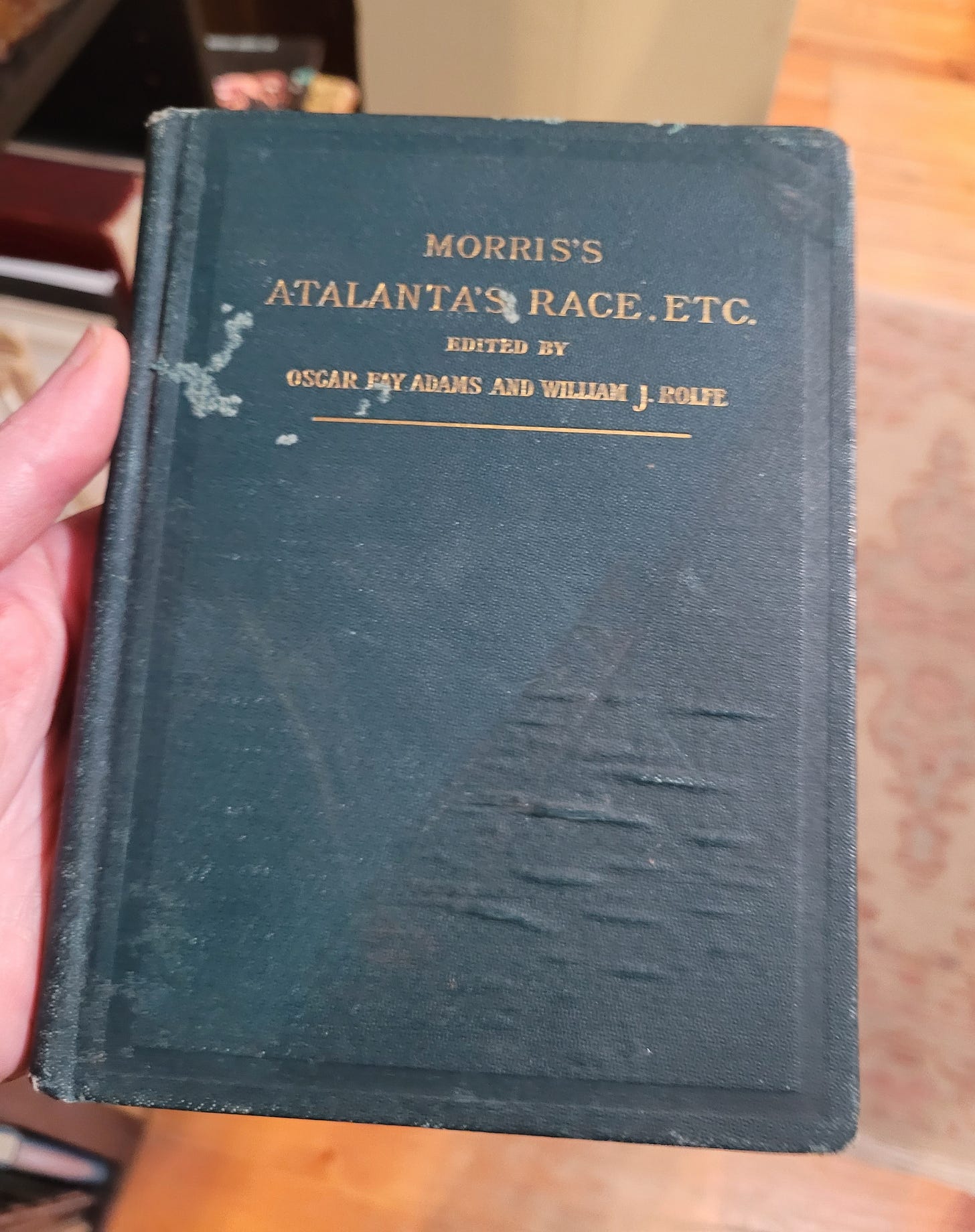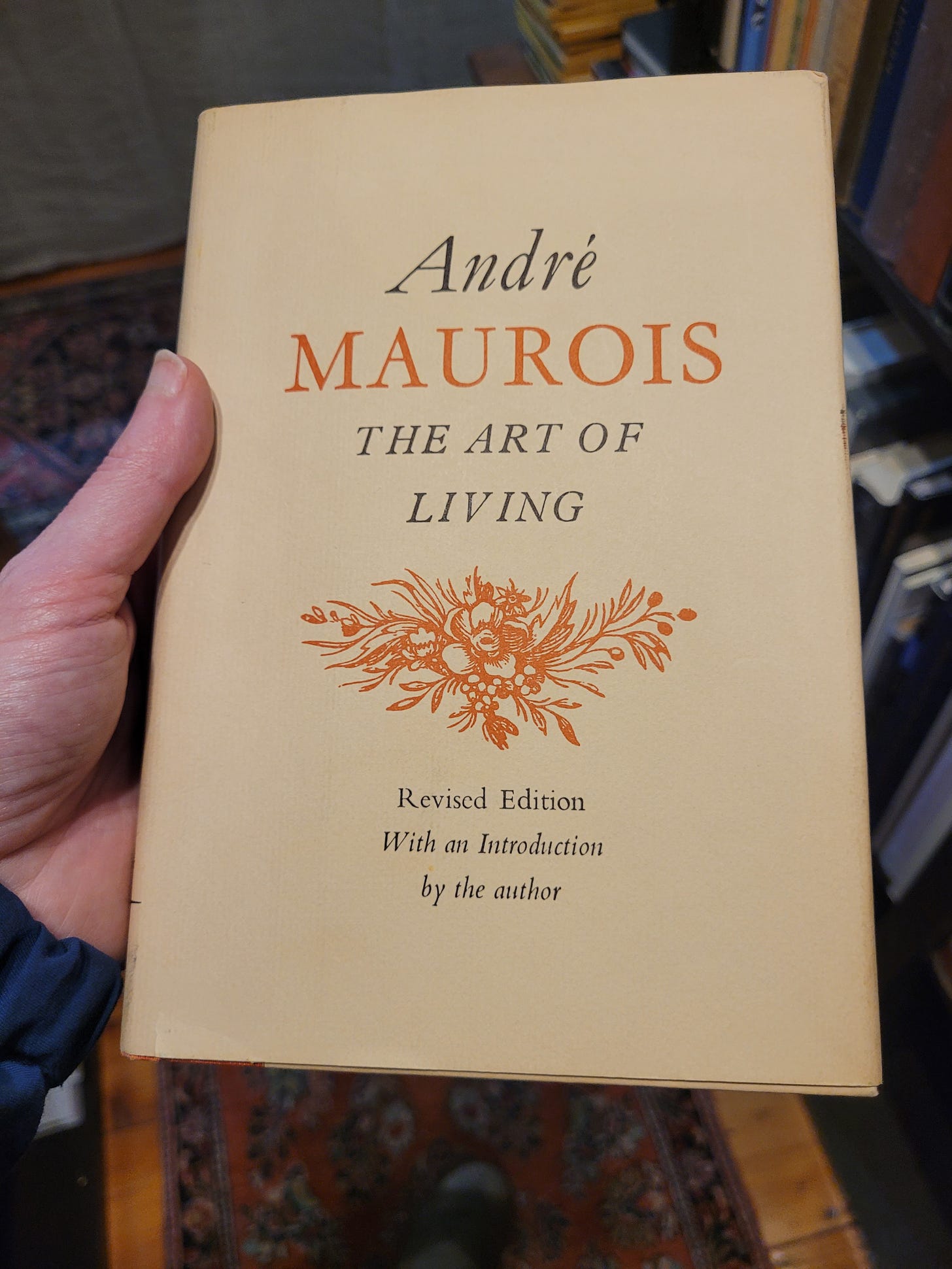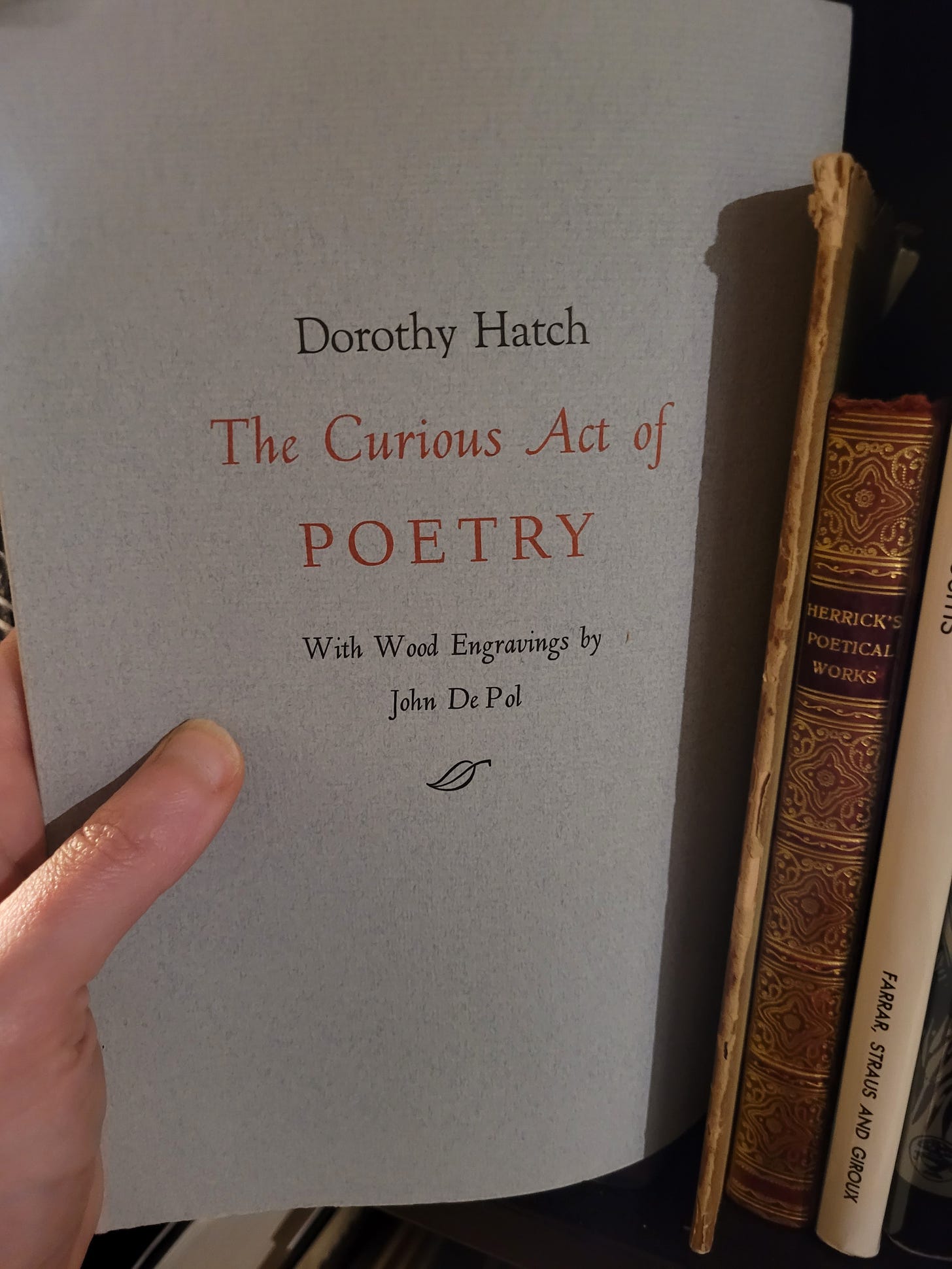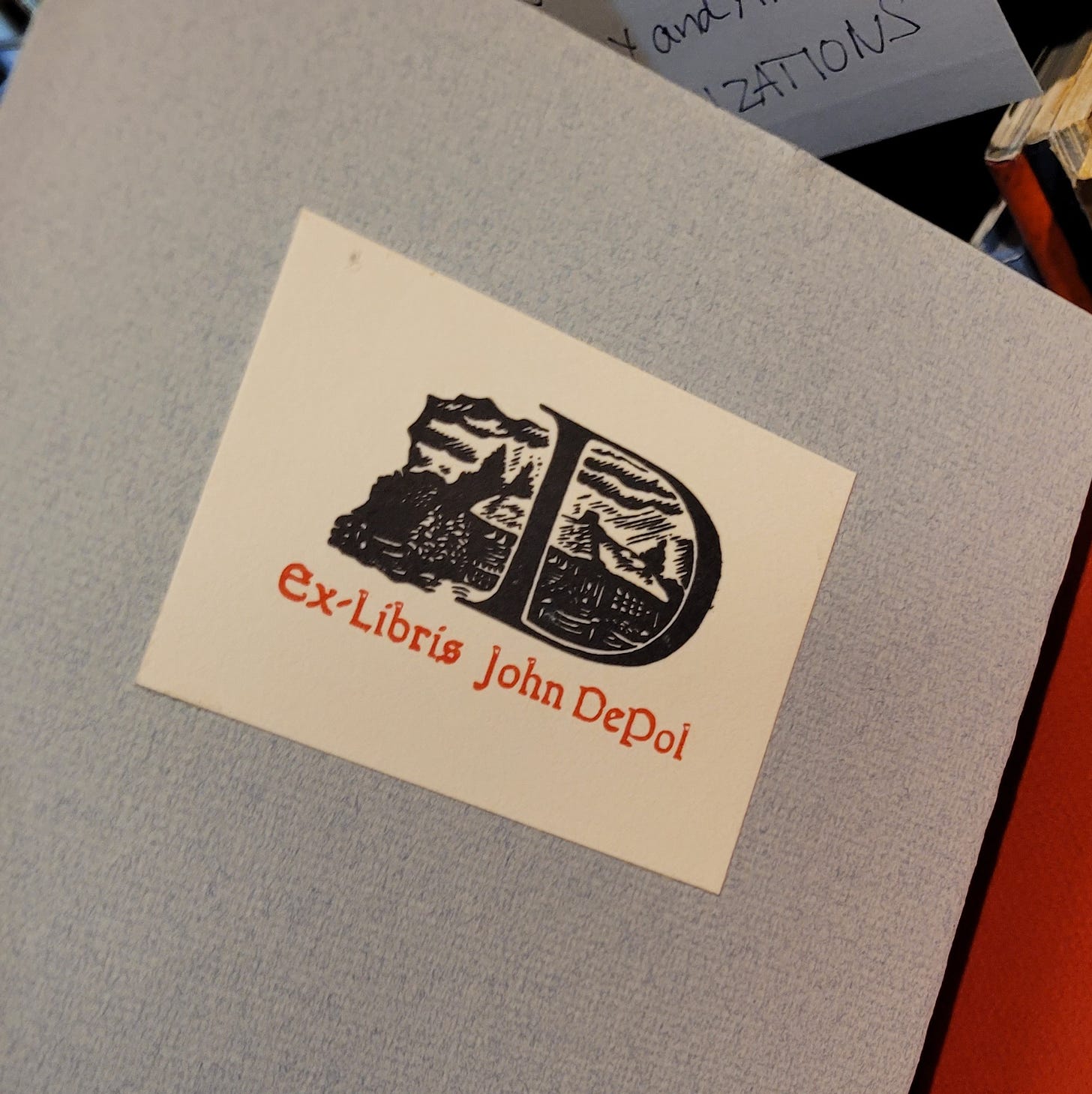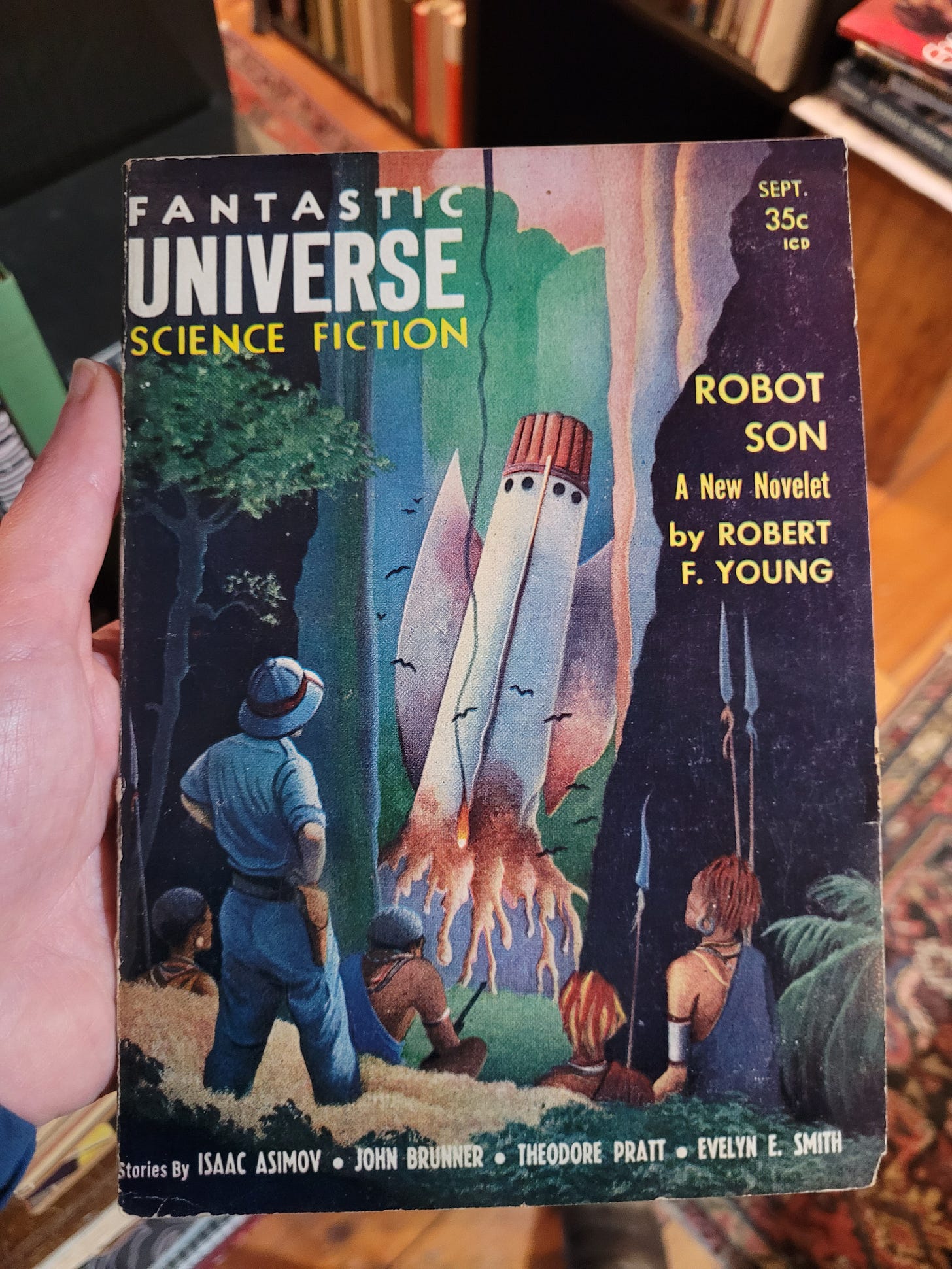A dog house
This morning, for reasons tricky to specify, I doodled this Dog House:
It’s a house that is a dog.
The dog house invites many questions:
Who lives in the dog house?
Does the dog house walk around? I know it has no visible legs, but it might (as the velveteen rabbit pretends to do) be sitting on them.
Does it have to eat? What does it eat?
Is it a dog as big as a house or a house as small as a dog?
What is its name?
I have no premeditated answers to any of these things. The dog house gives me Phantom Tollbooth vibes, and maybe also Howl’s Moving Castle vibes. I wonder what kind of story he lives in.
“The dog house sort of looks like your dog Gus,” you remark. Is that so? Well, these things are tricky to pin down. You might suppose it was inspired by Gus, but it could just as easily be that the dog house and Gus’s existence were jointly inspired by some third dog that predated them both. Who can say.
The burden of beautiful books
Book historians, I am told, are always jonesing for evidence of how everyday people interacted with a given book. For posterity’s sake, therefore (are you there, posterity? It’s me, some guy), I set down some thoughts from when I crouched before the bottom shelves in a used bookstore yesterday afternoon.
Say you give me a beautiful early edition, hardback, of some classic or obscure book that I love. Incredible! Thank you. So generous. I adore it. But! What do I do with it?
I guess I probably display it in my house somehow. If I have the right setup, maybe I can have it sit front-facing so I remember to admire it more often. Occasionally I take it down and very delicately leaf through it. If a friend comes by who might like it, I encourage them to do the same.
The following things I will probably not do:
Mark it up in pencil;
Carry it in my purse;
Actually read it.
If you want to talk about material culture, book-as-object, the Beautiful Book becomes (to me) a little art object that I should probably not touch too much. The actual text inside it I’ll look for someplace else.
This is why certain gorgeous used bookstores—the ones that advertise RARE BOOKS on the window, for instance—tend to be less promising repositories (for my actual text-interaction purposes) than schlubbier ones.1 In terms of something I’m actually going to read, I would prefer a portable (likely paperback) edition, and one not too expensive or rare. That way I can make marginal notes if needed,2 and also I won’t have to cry if I accidentally bend the cover when I stuff something in my bag.
Of course I still like beautiful hardcover books!! Who wouldn’t? Please keep making them, publishers. It’s just that I also need you to make less-nice editions for actual reading purposes.
I expect this is a reasonably common preference, but it seems like some people imagine bookish folks would always prefer the most beautiful physical edition of a text. For special collecting and cherishing purposes, sure. Otherwise, give me a floppyboy.3
Enough of that. Bookstore report from this afternoon:
I found a really lovely copy of William Morris’s Atalanta’s Race (19th century edition) which I did not buy. (See above, I guess.) It had a bunch of marginal notes by a previous owner, which almost made me grab it—sometimes this is what you buy a book for, that weirdo one-way conversation with a reader who was maybe brilliant, maybe super confused, maybe Going Through It.4
Another cool thing about this copy was that, with the very thin pages and letterpress printing, you could feel the impression of the letters on the back of each page. (Publishers: Retvrn?)
In this case I didn’t get the book because (despite my liking Morris very much) I don’t know that I love Atalanta’s Race. Having an edition of it that I’m somewhat disinclined to read will not help me figure out if I do. So, I just took a picture.5
What I did purchase:
This book by André Maurois, which looks good to me:
Some trivia for you: André Maurois was born Émile Herzog and stands as a rare case of an author legally changing his name to match his pen name. Anyway, will read and report back.
This chapbook-format essay on poetry:
I’m a sucker for people in the past trying to express what they like about literature. It’s fun to watch claims and themes swell and recede, besides its being genuinely helpful to my thinking a lot of the time.
I’m not aware that Dorothy Hatch was any kind of significant literary critic; it rather seems that the publisher just liked her way of thinking about poetry. (If you know otherwise, feel free to weigh in.) This is part of what made me want to read it.
Also: this copy seems to have come from the library of the illustrator! Fun.
I did not buy any of these cool 1950s sci-fi magazines, sadly:
I would have, but they were $15 each!! Brother that’s what the Internet Archive is for.
Hits du jour
Some things I’ve been enjoying:
YouTube reminded me of this old video of a Sicilian dog galloping down a seaside path and leaping into the waves. Truly one of the happiest videos out there. I highly recommend a watch or re-watch.
John got me an amazing gift: The new three-volume set of J.R.R. Tolkien’s collected poems. What a wonderful set of books! Since Tolkien didn’t publish many of the poems in his lifetime, the editors have chosen to include whatever various manuscript versions of the poems they can get their hands on, along with commentary about when the different drafts happened. In that sense, it’s less like a traditional poetry collection and more a study of an author’s tinkering process. Very fun. A very special gift for the Tolkienista in your life.
My most recent visit to New Jersey (and eastern PA) has given me my first chance to get Italian water ice. Listen: I’ve already made the point on our (non-locals’) behalf that the label “water ice” is no help at all. If an ice is not made from water, I don’t want to ingest it. That said, the actual treat is very tasty, and very light! Surely one could eat three of these a day and be fine, she said optimistically.
That’s all for now, friends.
Also I can’t afford their stuff. It must be said.
Nothing to cure you of a fear of writing in books like an English lit degree.
?? Oh no, she has no editor, they realize
Usually they’re a college student with a truly mysterious essay topic that has them underlining passages which for the life of you, you cannot see the significance of. Sometimes an unexplained word like “Johnson??” or “Mothers” hovers in the margin. This is a cypher. Contemplate it.
Taking pictures of books is THE KEY (in my experience) to avoiding impulse purchases. Nota bene!





